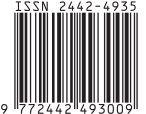Perbedaan Efektifitas Antibakteri Ekstrak Daun Sirih Merah (Piper crocatum) pada Porphyromonas gingivalis dan Streptococcus viridans
Abstract
Dental caries and periodontal disease has been experienced by about 90% of the people of Indonesia. Porphyromonas gingivalis is a major cause of periodontal disease particularly periodontitis. Streptococcus viridans is a cause of the disease and root canal pulp. Both microorganisms are gram-negative and gram-positive anaerobic bacteria. Periodontal disease and dental caries can be prevented by reducing bacteria on teeth using antibacterial material. The red betel leaf extract as traditional plants can be used as an antibacterial material. The purpose of this study was to determine differences in the effectiveness of antibacterial extract of red betel leaf (piper crocatum) in Porphyromonas gingivalis and Streptococcus viridians. This study used 16 diffusion wells and divided into 2 groups: group I Porphyromonas gingivalis were given red betel leaf extract and Streptococcus viridans group II were given red betel leaf extract. The wells diffusion incubated for 24 hours at 37 ° C and it measured the inhibition zone diameter. The results showed that the average diameter of inhibition zone Porphyromonas gingivalis were given red betel leaf extract is greater than Streptococcus viridans. Independent T-test results showed significant differences in both the test group (p <0.05). Conclusion The study showed that the antibacterial power of red betel leaf extract in Porphyromonas gingivalis is more effective than the red betel leaf extract in the Streptococcus viridians.







